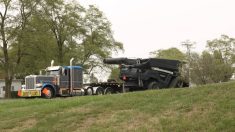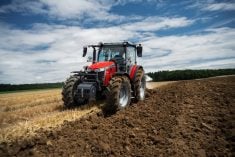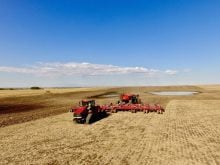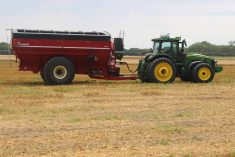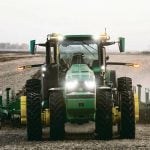Two years ago AGCO introduced the all-new 1000 Series rigid-frame tractor to the world with a big splash, using Bavaria’s spectacular Neuschwanstein Castle as the backdrop for the press event. The brand recently followed up on that European introduction with a more conventional official launch of these machines in North America at the National Farm Machinery Show in Louisville, Kentucky, in February.
Despite starting off in the European market, Rob Smith, a senior AGCO executive, who spoke about the tractor at a press conference during the Agritechnica machinery show in November, said the 1000 Series was designed from the outset with the North American market in mind.
In fact, the tractor was meant to have a broad appeal, which is why its design is so different.

The 1000 Series is certainly no me-too tractor. Its models are the first and only machines in an entirely new tractor category. It looks like a standard front-wheel assist; however, it boldly goes where no rigid-frame, wheeled model has gone before when it comes to horsepower ratings. The four models in the series go from 380 to 500 horsepower. Until now if you wanted a wheeled tractor in that range, an articulated four-wheel drive was the only choice.
This tractor is meant to go head-to-head with four-wheel drives and steal some market share from them.
During that press conference in Germany, the company revealed the development goals behind the 1000 Series concept. First, engineers were striving for a 10 per cent reduction in fuel consumption compared to four-wheel drives. Second, they wanted the overall design to be more flexible and versatile. Lastly, to achieve those goals they wanted the tractors to be capable of a broader range of weight ballasting, so they can be lighter when that is an advantage. And using some of the biggest ag tires available, they still plant a lot of rubber on the ground to make use of up to 500 horsepower.
The tractors use an entirely new drive train design too, which won it a “Tractor of the Year” award in the high horsepower class at Agritechnica. The idea behind it is similar to the all-wheel drive concept in sports cars. Power flows to the wheels that need it most, and only when they need it. Not driving all the wheels all the time is one of the fuel saving strategies built into the tractor.

Fendt’s Vario CVT transmission routes power from the engine, but from there things start to look different. A combined mechanical-hydrostatic drive arrangement uses two hydraulic motors, one to spin the front axle and another for the rear. Drive can be distributed to each one at different rates or stopped altogether. Another benefit of that is it helps limit driveline stress.
Also, a tighter turning circle can be created by routing drive to the front axle and pulling the tractor through a curve.
Base weight on tractors in this series is only 30,000 pounds, but they can carry an additional 50 per cent of that as ballast. With the Fendt VarioGrip option, tire pressure can be adjusted from the cab to further maximize traction. In fact, the 1000 Series VarioTerminal will even calculate a bunch of variables to help determine proper ballasting, tire pressure and working speed to efficiently get power to the ground. Just program in the implement you’re working with, and answer a couple of questions on a special screen.
Read Also
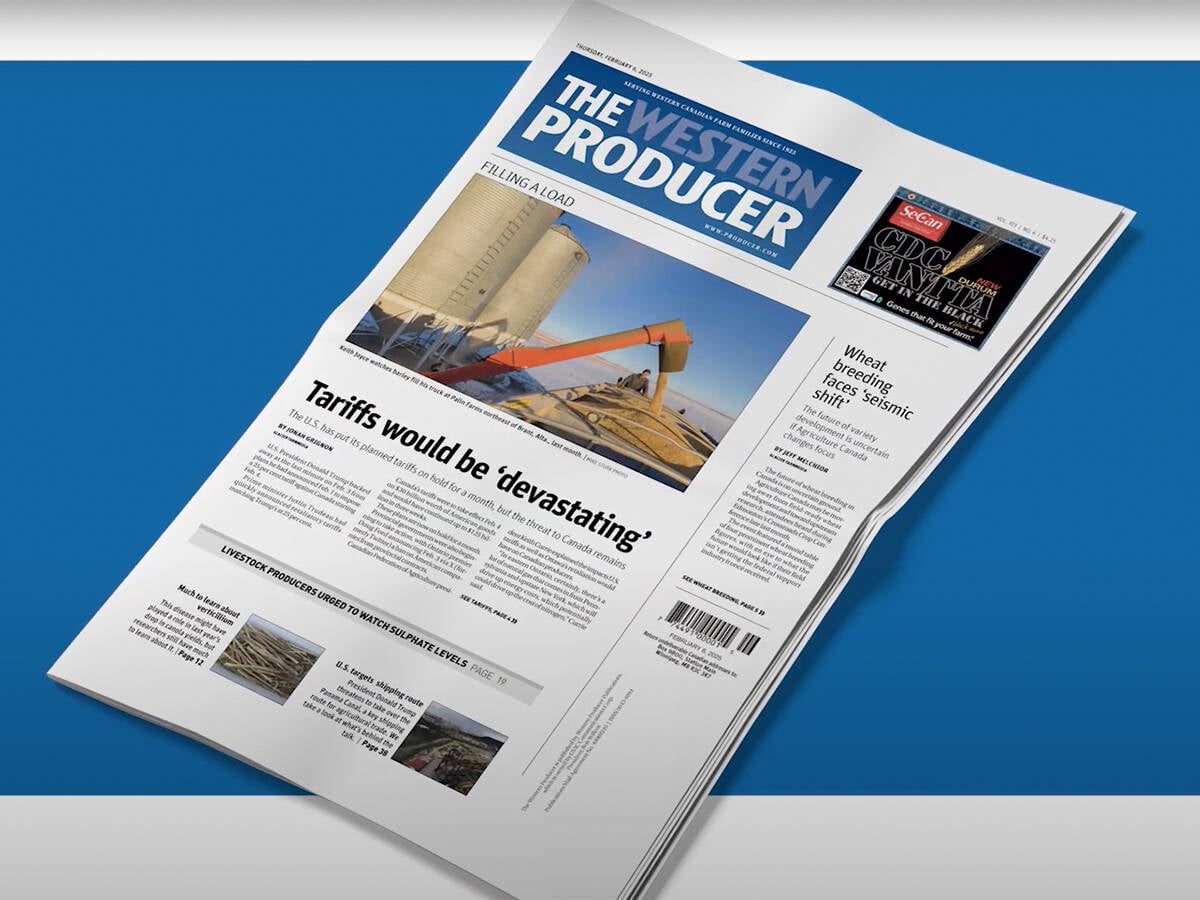
Note to subscribers: Planting a new seed for Grainews
Grainews now moves into The Western Producer as part of the farm newspaper’s new Farm Work section, providing Western Canada’s grain growers with one place to get the news and information they need.
These tractors also get some other firsts for the brand. A new, bigger cab is one of them. The door opening has been enlarged compared to other series in the Fendt brand. And the standard pale green paint gives way to Fendt’s new “Nature Green” on these tractors. It’s “characterized by a higher colour density and depth” according to the company description. Having seen it, I have to say it is nicer. Nature Green paint will now also be available on other models as an option.
When it comes to hydraulic capacity, the 1000 Series aims high. 140 l/min is standard, but that can be spec’d up to 430 with a twin pump option. That option allows the rear of the tractor to be equipped with two banks of SCVs, each side run off its own pump. In total, up to six SCVs are available on the rear and one on the front. And there are separate transmission and hydraulic fluids. The company claims that helps up the recommended oil change intervals to 2,000 hours.

Under the hood, the 12.4 litre MAN diesel engine is cooled by the new CAS (Concentric Air System). The hydraulically-driven fan is positioned in front of the rad and apparently is 25 to 70 per cent (depending on environmental conditions) more efficient at keeping the engine cool. Its speed depends on cooling requirements, not engine r.p.m.
The MAN engine has a rated speed of only 1,700 r.p.m., with the main working range between 1,150 and 1,550. The 1050 model delivers 1,770 foot-pounds of torque at just 1,100 r.p.m. The tractors hit a maximum road speed of 60 km/h at only 1,450 r.p.m. That low rev-high torque ability is another of the features the brand believes helps keep fuel consumption low.

Just what does it cost to bring home all this sophisticated technology? North American retail pricing has now been set, and base prices range from US$420,000 to $485,000. The tractors are ready for pre-ordering now, with dealer deliveries expected to begin in November.
And if you want one of these tractors but don’t have a local Fendt dealer, that won’t be a problem. AGCO CEO Martin Richenhagen took the stage during the Agritechnica press conference and said the 1000 Series will also be offered in the company’s yellow Challenger line. “It might say ‘made by Fendt’ or ‘engineered by Fendt’ or something like that,” he said. The Challenger version is scheduled for public introduction sometime within the next few months.




